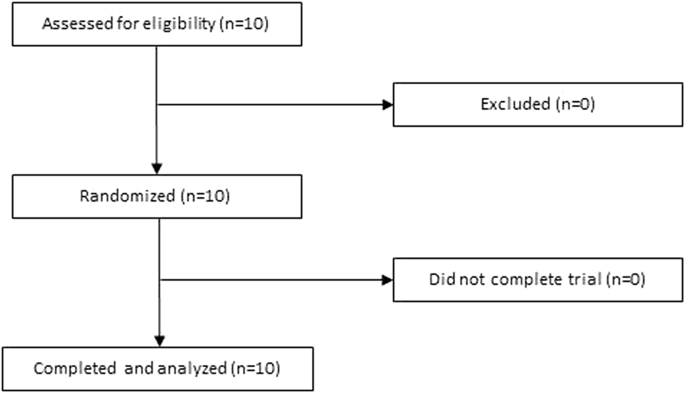Nutrition & Diabetes ( IF 4.6 ) Pub Date : 2018-12-11 , DOI: 10.1038/s41387-018-0066-5 Effie Viguiliouk , Alexandra L Jenkins , Sonia Blanco Mejia , John L Sievenpiper , Cyril W C Kendall

|
Background/Objectives
To investigate the effect of dried fruit in modifying postprandial glycemia, we assessed the ability of 4 dried fruits (dates, apricots, raisins, sultanas) to decrease postprandial glycemia through three mechanisms: a glycemic index (GI) effect, displacement effect, or ‘catalytic’ fructose effect.
Subjects/Methods
We conducted an acute randomized, multiple-crossover trial in an outpatient setting in 10 healthy adults. Participants received 3 white bread control meals and 12 dried fruit test meals in random order. The test meals included each of 4 dried fruits (dates, apricots, raisins, sultanas) alone (GI effect), 4 of the dried fruits displacing half the available carbohydrate in white bread (displacement effect), or 4 of the dried fruits providing a small ‘catalytic’ dose (7.5 g) of fructose added to white bread (‘catalytic’ fructose effect). The protocol followed the ISO method for the determination of GI (ISO 26642:2010). The primary outcome was mean ± SEM GI (glucose scale) for ease of comparison across the three mechanisms.
Results
Ten healthy participants (7 men, 3 women; mean ± SD age and BMI: 39 ± 12 years and 25 ± 2 kg/m2) were recruited and completed the trial. All dried fruit had a GI below that of white bread (GI = 71); however, only dried apricots (GI = 42 ± 5), raisins (GI = 55 ± 5), and sultanas (51 ± 4) showed a significant GI effect (P < 0.05). When displacing half the available carbohydrate in white bread, all dried fruit lowered the GI; however, only dried apricots (GI = 57 ± 5) showed a significant displacement effect (P = 0.025). None of the dried fruits showed a beneficial ‘catalytic’ fructose effect.
Conclusions
In conclusion, dried fruits have a lower GI and reduce the glycemic response of white bread through displacement of half of the available carbohydrate. Longer-term randomized trials are needed to confirm whether dried fruit can contribute to sustainable improvements in glycemic control.
Trial registration
ClinicalTrials.gov identifier, NCT02960373
中文翻译:

干果对餐后血糖的影响:一项随机急性喂养试验
背景/目标
为了研究干果在改善餐后血糖中的作用,我们评估了4种干果(枣,杏子,葡萄干,葡萄干)通过三种机制降低餐后血糖的能力:血糖指数(GI)效应,置换效应或'催化的果糖效应。
学科/方法
我们在10位健康成年人的门诊进行了一项急性随机,多交叉试验。参与者随机接受了3份白面包对照餐和12份干果测试餐。测试膳食包括单独的4种干果(枣,杏,葡萄干,葡萄干)(GI效果),4种干果取代白面包中可用碳水化合物的一半(置换效果)或4种干果提供将少量“催化”果糖(7.5克)果糖添加到白面包中(“催化”果糖作用)。该协议遵循ISO确定GI的方法(ISO 26642:2010)。主要结果是平均值±SEM GI(葡萄糖量表),以便于比较三种机制。
结果
招募了10名健康参与者(7名男性,3名女性;平均±SD年龄和BMI:39±12岁和25±2 kg / m 2)并完成了试验。所有干果的GI均低于白面包(GI = 71);然而,只有杏干(GI = 42±5),葡萄干(GI = 55±5)和苏丹娜(51±4)表现出显着的GI效应(P <0.05)。当用白面包代替一半的碳水化合物时,所有干果都会降低GI。但是,只有杏干(GI = 57±5)才显示出明显的置换效果(P = 0.025)。没有一种干果表现出有益的“催化”果糖效果。
结论
总之,干果的GI较低,并且通过置换一半的可用碳水化合物来降低白面包的血糖反应。需要进行长期的随机试验,以确认干果是否可以促进血糖控制的可持续改善。
试用注册
ClinicalTrials.gov标识符,NCT02960373











































 京公网安备 11010802027423号
京公网安备 11010802027423号